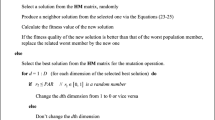Abstract
In this paper, we propose a generalized method of high-level three dimensional (3D) signal constellation mapping based on the most basic 3D structure: regular tetrahedron cells. First, we redefined the waveform design, the normalized frequency and phase modulation for the geometric construction of tetrahedron cells. Then, the new topology of tetrahedron cells based on the traditional lattice 3D constellation were constructed. Especially, we focused on the two essential types, 8-ary and 16-ary based on tetrahedron cells on behalf of the odd and even carry bits, respectively. The available range and closed forms of the symbol error probability (SEP) were derived to increase the effectiveness and safety of wireless communication systems. Normalized minimum Euclidean distance and average number of neighbors were utilized to measure the performance against Gaussian noise. Simulation results showed that the proposed 8-ary and 16-ary 3D constellation mapping obtained 0.25 and 0.5 dB gain at the SEP of 10−6 and 10−4, respectively, over traditional 3D lattice structure in additive white Gaussian noise (AWGN) channel.
创新点
本文提出了基于正四面体空间结构的高阶三维星座图的一般调制方式。首先, 我们重新定义了正四面体星座图的波形结构为归一化的相频调制。基于传统的三维格式结构, 我们给出了一种正四面体的维度拓展方式。为了区分奇偶比特拓展特征, 本文重点研究了8点和16点的三维星座图, 并推导出误符号率的闭式解。我们利用归一化的最小欧氏距离和相邻星座点数衡量该星座图的抗噪声性能, 并通过仿真验证了代表奇偶比特调制的8点和16点三维星座图相对于传统的三维格式结构分别获得了0.25dB和0.5dB的误符号率增益。
Similar content being viewed by others
References
Vergara E J, Sanjuan J, Nadjm-Tehrani S. Kernel level energy-efficient 3G background traffic shaper for android smartphones. In: Proceedings of 9th International Wireless Communications and Mobile Computing Conference, Sardinia, 2013. 443–449
Larsson E, Edfors O, Tufvesson F, et al. Massive MIMO for next generation wireless systems. IEEE Commun Mag, 2014, 52: 186–195
Zajic A G, Stuber G L. Three-dimensional modeling and simulation of wideband MIMO mobile-to-mobile channels. IEEE Trans Wirel Commun, 2009, 8: 1260–1275
Qi Y, Yang S, Cai S, et al. A method of 3D modeling and codec. Sci China Ser-F: Inf Sci, 2009, 52: 758–769
Slepian D. Bounds on communication. Bell Syst Tech J, 1963, 42: 681–707
Benedetto S, Poggiolini P. Combined amplitude and polarization shift keying optical coherent modulation. Electr Lett, 1990, 26: 918–919
Benedetto S, Poggiolini P. Theory of polarization shifting keying modulation. IEEE Trans Commun, 1992, 40: 708–721
Li Y, Ji X D, Liang D, et al. Dynamic beamforming for three dimenisonal MIMO technique in LTE-advanced networks. Int J Anten Propag, 2013, 2013: 1–8
Oestges C, Clerckx B, Guillaud M, et al. Dual-polarized wireless communications: from propagation models to system performance evaluation. IEEE Trans Wirel Commun, 2008, 7: 4019–4031
Song H B, Zhang J B, Chen X G, et al. Three-dimensional polarization amplitude modulator and demodulator (in Chinese). J Commun, 2012, 33: 15–22
Song H B, Chen X G, Zhang J Q. Novel vector antenna-based approach to three dimensional modulation (in Chinese). Chin J Radio Sci, 2012, 27: 650–656
Kang S G. An OFDM with 3-D signal mapper and 2-D IDFT modulator. IEEE Commun Lett, 2008, 12: 871–873
Kang S G, Chen Z, Kim J Y, et al. Construction of higher-level 3-D signal constellations and their accurate symbol error probabilities in AWGN. IEEE Trans Signal Process, 2011, 59: 6267–6272
Conway J H, Burgiel H, Chaim G S. The Symmetries of Things. 1st ed. A K Peters/CRC Press, 2008. 292–298
Batshon H G, Djordjevic I B. Beyond 240 Gb/s per wavelength optical transmission using coded hybrid subcarrier/amplitude/phase/polarization modulation. IEEE Photon Technol Lett, 2010, 22: 299–301
Porath J E, Aulin T. Design of multidimensional signal constellations. In: Proceedings of the IEE Communication, 2003. 317–323
Chen Z X, Choi E G, Kang S G. Closed-form expressions for the symbol error probability of 3-D OFDM. IEEE Commun Lett, 2010, 14: 112–114
Cho S, Park S K. Improved 16-ary constellation mapping for three-dimensional OFDM systems. Electr Lett, 2012, 48: 530–532
Author information
Authors and Affiliations
Corresponding author
Rights and permissions
About this article
Cite this article
Shi, P., Huan, H. & Tao, R. Waveform design for higher-level 3D constellation mappings and its construction based on regular tetrahedron cells. Sci. China Inf. Sci. 58, 1–12 (2015). https://doi.org/10.1007/s11432-014-5234-1
Received:
Accepted:
Published:
Issue Date:
DOI: https://doi.org/10.1007/s11432-014-5234-1




